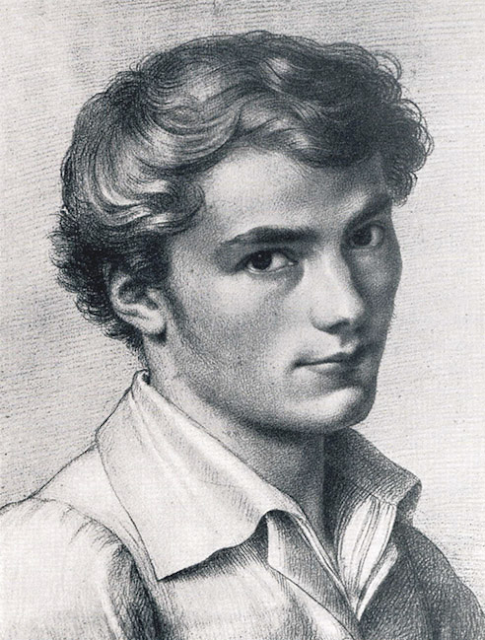Vocal Music
- Psalm XXIII – Paul Creston (1906-1985), Amy Bogan, soprano
Instrumental Music
- Symphony No. 4 in C Minor: II. Andante – Franz Schubert (1797-1828)
- Prelude in C, BWV 547– J. S. Bach (1678-1750)
Congregational Music (all hymns from the Hymnal 1982)
- Hymn 675 - Take up your cross, the Savior said (BOURBON)
- Song of Praise S-236 – Canticle 13: Glory to You – John Rutter (b. 1945)
For the opening voluntary this week, I am playing a piano transcription of the first theme of the second movement of the fourth symphony of Franz Schubert. (I tried to get a "third" in there somewhere, but I just can't. You'll have to read on further to get to a"three.") The second movement of the classic symphony form is usually the slow, lyrical movement,
This second movement Andante is no different. It is a beautifully Schubertian poem – yearning, melodic, full of rays of tenderness and hope. I thought it would be a nice, quiet, peaceful way to prepare for worship.
 |
| Franz Schubert about the time he wrote Symphony 4 |
Franz Schubert was just 19 years old when he wrote his Fourth Symphony. He was really beginning to hit his stride as a composer, but it was not yet his sole profession. He unhappily endured his working hours as an assistant teacher at his father’s school in the Säulengasse in Vienna.
It is hard to imagine how Schubert balanced his teaching duties with his passion for composition. During two years as a teacher, he wrote 382 pieces of music, including his Second, Third, and Fourth Symphonies; four Singspiels (operas); great quantities of dances for solo piano; a fair amount of chamber music; lots of sacred music, including three complete Masses; and an abundant stream of songs, including such enduring favorites as Erlkönig, Heidenröslein, and Litanei auf das Fest Aller Seelen. Then, too, he was enjoying a full social life and was taking composition lessons twice a week from Antonio Salieri. It is a remarkable output for a man who died just twelve years later.
The closing voluntary is a prelude in C Major by Johann Sebastian Bach. In this piece, Bach plays with both movement and motionlessness. The 9/8 time signature of the Prelude evokes a rocking motion, which is underlined in the first bar by the clear division into three groups of three notes. (Here is where the elusive "three" from the first paragraph comes in.) From the opening of the Prelude onwards, a world of movement unfolds. The hands start to play faster notes and the pedal enters below with a hop, step and jump.
Bach plays with motionlessness as well. Towards the end of the Prelude, we hear long, motionless notes in the pedal and at a certain moment the movement seems to falter to a halt in a series of chords that go off the harmonic rails, after which the pedal comes to rest on the home base with a throbbing low C, while the rest of the parts run the final stretch.
No comments:
Post a Comment
Note: Only a member of this blog may post a comment.